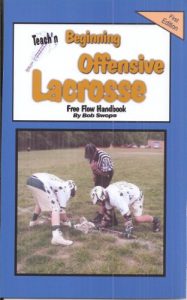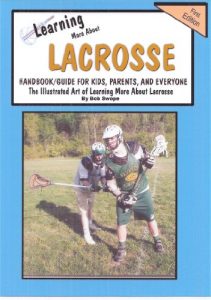I 99eBooks è una directory di eBook. Cerchiamo e classificato intorno alle eBooks Web per te!
Tutti i diritti riservati. I libri e libri elettronici sono di proprietà dei rispettivi proprietari.
Kids’ Lacrosse Solutions: Diagnosing and Solving Problems for Elementary School Boys’ Lacrosse (English Edition)
Many young players struggle with basic lacrosse skills.
Scores of them quit in frustration.
Having someone steer them through the struggle can accelerate their mastery of lacrosse skills and hold their interest. When parents or coaches diagnose a problem and fix it, they not only help the child have more fun, but also show him that an obstacle need not become a barrier.
People learn to solve players’ problems by trial and error or after years of coaching. But the players can’t wait that long. Where can someone new to lacrosse quickly find the fixes the players need? The answer is Kids’ Lacrosse Solutions.
Typical problems with ground balls, passing, catching, and stick handling have their own chapters. Starting with a table of contents that lists each problem, the book pinpoints possible reasons for the problem and then delivers solutions.
Are his passes too high? See chapter 4.
Does he have trouble with ground balls? Here's an excerpt from chapter 3 for solving ground ball problems:
.
"3—GROUND BALLS
A ground ball problem is any problem related to a player’s gaining and keeping control of a ground ball. Usually the problem is picking up the ball, but some players have difficulties after they pick up the ball.
In general, a player who is unable to pick up a ground ball or having excessive problems picking up a ground ball is failing to adhere to all of the correct procedures for picking up a ball. The most common mistake is failing to get his back hand down.
Start by carefully observing him as he performs the skill. If you can spot the problem, show him the correct procedure. If you need to review the procedure for picking up ground balls, see Appendix A.
Problem: He appears unable to perform the correct procedure.
Diagnosis: Almost all munchkins are capable of the maneuvers for picking up ground balls, so he’s uncertain or confused about one or more elements of correct procedure.
Solution: Have him perform the correct procedure in slow motion, until he masters the correct procedure.
Problem: His stick just pushes the ball along.
Diagnosis 1: This is the most common manifestation of failing to follow the correct procedure.
Solution: The most common reason for this problem is that he’s holding the butt end of his stick too high off the ground. So ensure that the butt end of the stick is close to the ground. At the risk of stating the obvious, this requires his back hand to be close to the ground as well.
Diagnosis 2: He’s not moving fast enough. On some surfaces a ball resists going into the pocket if the player is not moving fast enough.
Solution: Have him move faster while approaching the ball."
When he tries to catch, does the ball bounce out of his pocket? Chapter 5 will tell you why and how to fix it.
Are his passes too low? Chapter 4 shows you the myriad reasons for this problem and a solution for each one.
Every solution in this book has fixed a problem for an elementary school player.
If your player has a problem with basic lacrosse skills, you need this book.
Tom Mylott has coached elementary school boys’ lacrosse since 2003. He is the author of the books: Kids’ Lacrosse, Kids’ Lacrosse Drills, Kids’ Lacrosse for Parents, and Kids’ Lacrosse Equipment. He blogs at kidslacrosse.com.
Scores of them quit in frustration.
Having someone steer them through the struggle can accelerate their mastery of lacrosse skills and hold their interest. When parents or coaches diagnose a problem and fix it, they not only help the child have more fun, but also show him that an obstacle need not become a barrier.
People learn to solve players’ problems by trial and error or after years of coaching. But the players can’t wait that long. Where can someone new to lacrosse quickly find the fixes the players need? The answer is Kids’ Lacrosse Solutions.
Typical problems with ground balls, passing, catching, and stick handling have their own chapters. Starting with a table of contents that lists each problem, the book pinpoints possible reasons for the problem and then delivers solutions.
Are his passes too high? See chapter 4.
Does he have trouble with ground balls? Here's an excerpt from chapter 3 for solving ground ball problems:
.
"3—GROUND BALLS
A ground ball problem is any problem related to a player’s gaining and keeping control of a ground ball. Usually the problem is picking up the ball, but some players have difficulties after they pick up the ball.
In general, a player who is unable to pick up a ground ball or having excessive problems picking up a ground ball is failing to adhere to all of the correct procedures for picking up a ball. The most common mistake is failing to get his back hand down.
Start by carefully observing him as he performs the skill. If you can spot the problem, show him the correct procedure. If you need to review the procedure for picking up ground balls, see Appendix A.
Problem: He appears unable to perform the correct procedure.
Diagnosis: Almost all munchkins are capable of the maneuvers for picking up ground balls, so he’s uncertain or confused about one or more elements of correct procedure.
Solution: Have him perform the correct procedure in slow motion, until he masters the correct procedure.
Problem: His stick just pushes the ball along.
Diagnosis 1: This is the most common manifestation of failing to follow the correct procedure.
Solution: The most common reason for this problem is that he’s holding the butt end of his stick too high off the ground. So ensure that the butt end of the stick is close to the ground. At the risk of stating the obvious, this requires his back hand to be close to the ground as well.
Diagnosis 2: He’s not moving fast enough. On some surfaces a ball resists going into the pocket if the player is not moving fast enough.
Solution: Have him move faster while approaching the ball."
When he tries to catch, does the ball bounce out of his pocket? Chapter 5 will tell you why and how to fix it.
Are his passes too low? Chapter 4 shows you the myriad reasons for this problem and a solution for each one.
Every solution in this book has fixed a problem for an elementary school player.
If your player has a problem with basic lacrosse skills, you need this book.
Tom Mylott has coached elementary school boys’ lacrosse since 2003. He is the author of the books: Kids’ Lacrosse, Kids’ Lacrosse Drills, Kids’ Lacrosse for Parents, and Kids’ Lacrosse Equipment. He blogs at kidslacrosse.com.

















